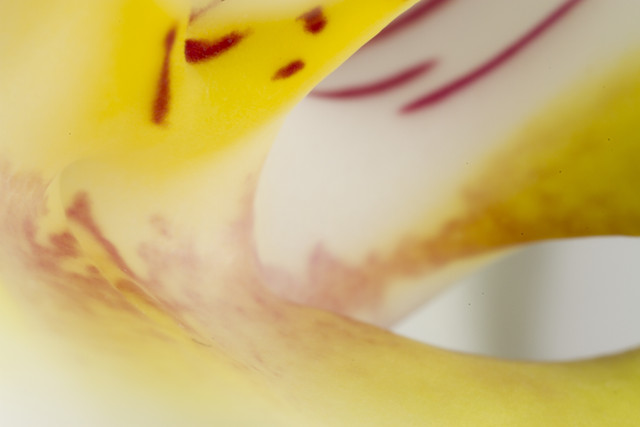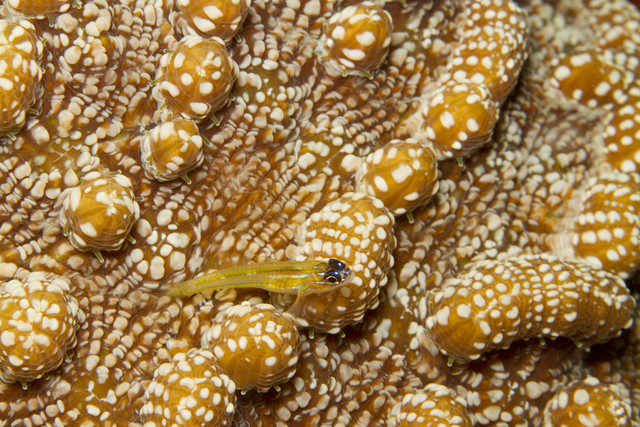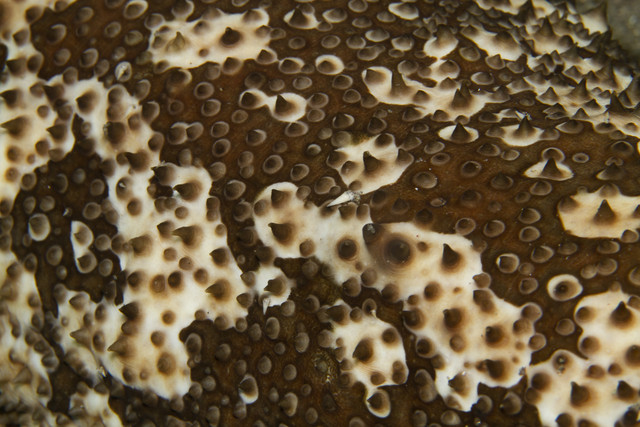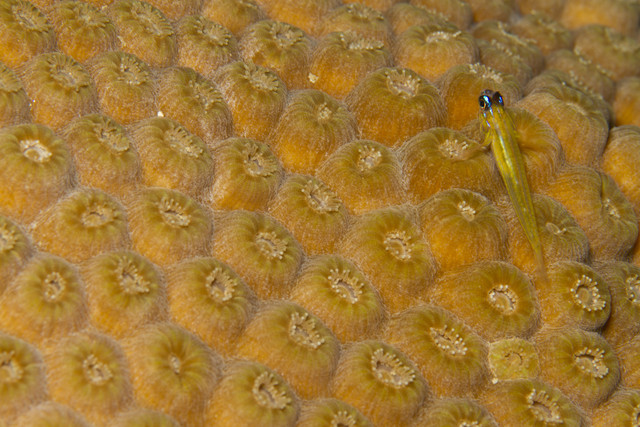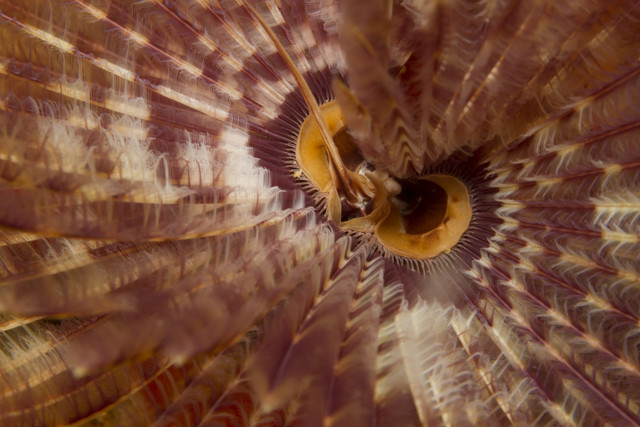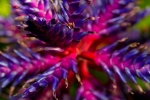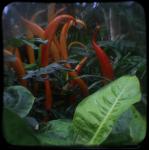abstract
Orchid Abstract
ktuli — Sun, 01/15/2012 - 21:58
One of the things that happen when you start working with macro photography is that you often lose perspective and cross over into a realm of abstract. Magnifying things we don't normally see, and some that we can't even see with the naked eye can certainly put someone in an unfamiliar, alien world.
To me, at least, that is part of the fun...
Technical Data: Canon EOS 7D, Canon MP-E 65mm f/2.8 1-5x Macro, 1/250 sec at f/16. Canon Macro Twin Lite MT-24EX in ETTL mode. ISO 100. RAW processing in Adobe Camera Raw.
Obviously, this is a very close-up shot of an orchid. The way the light from the flash and the intentional "over"-exposure produce an unworldly realm - almost like some glowing cave to my eyes - really seems to draw me into this photo.
- Bill
Sea Shell and Light Sources
ktuli — Thu, 12/01/2011 - 19:08
When taking photos, the source of your light makes all the difference. Today, I have a dramatic example to illustrate this fact.
I took these photos for an exercise for a photography class. The assignment had nothing to do with lighting, but as I was playing around with this subject, I figured I'd try some different things. The shell is pretty thin walled, so I took one shot with the light source just the lights in our light tent, then took another with a small LED light illuminating the inside of the shell.
The results are kind of interesting.
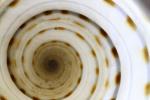 Internal lighting for 5.2 seconds |
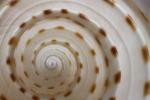 Regular lighting for 1/4 second |
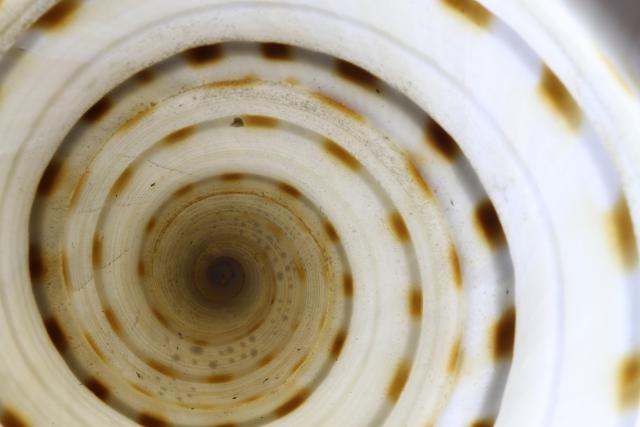 |
|
Technical Data: Canon EOS 7D, Canon EF 100mm f/2.8L Macro IS USM, 5.2 and 1/4 sec respectively at f/18.2. ISO 200.
Same exact subject, just slightly different settings and different lighting - it is amazing what little changes can make to a photograph. Which means you have to be able to visualize those kinds of things to be able to produce multiple images when given certain situations.
- Bill
Caribbean Explorer: Patterns of the Reef (part 4)
ktuli — Wed, 11/30/2011 - 16:40
Another in my Patterns of the Reef series. Like the second in the series, this one also features a Peppermint Goby (Coryphopterus lipernes), but this time it is sitting on what I believe is some Knobby Cactus Coral (Mycetophyllia aliciae).
Technical Data: Canon EOS 7D, Canon EF 100mm f/2.8L Macro IS USM, 1/120th sec at f/16. Image Stabilization on. ISO 100. Ikelite Housing and Port with Ikelite 161 Strobe in TTL Mode. Raw conversion in Photoshop CS5.
Like I've said, these patterns are just everywhere on the reef.
- Bill
Caribbean Explorer: Patterns of the Reef (part 3)
ktuli — Wed, 11/16/2011 - 20:40
Another installment in my Patterns of the Reef series.
Technical Data: Canon EOS 7D, Canon EF 100mm f/2.8L Macro IS USM, 1/120th sec at f/16. Image Stabilization on. ISO 100. Ikelite Housing and Port with Ikelite 161 Strobe in TTL Mode. Raw conversion in Photoshop CS5.
The subject is a close-up of a Furry Sea Cucumber (Astichopus multifidus). I have no clue where they get the furry name, but whatever works...
- Bill
Caribbean Explorer: Patterns of the Reef (part 2)
ktuli — Tue, 11/08/2011 - 17:25
Another installment of the Patterns of the Reef series today.
Technical Data: Canon EOS 7D, Canon EF 100mm f/2.8L Macro IS USM, 1/120th sec at f/16. Image Stabilization on. ISO 100. Ikelite Housing and Port with Ikelite 161 Strobe in TTL Mode. Raw conversion in Photoshop CS5.
This subject should obviously be a lot more identifiable with the small fish on the coral. The fish is a Peppermint Goby (Coryphopterus lipernes) sitting on some Great Star Coral (Montastraea cavernosa).
Probably not as strong as the first example, but still a fun exercise.
- Bill
Caribbean Explorer: Patterns of the Reef (part 1)
ktuli — Sun, 11/06/2011 - 20:43
Getting artistic with the photography underwater is something I've found the be very challenging so far, so from time to time during the dives, if I saw something that I thought worked well as an artistic shot, I would give a little effort at trying to come back with something a bit different from the species identification record shot.
On this trip, the thought that ran through my mind most often when trying this is to capture the patterns of the reef. They're really all over the place - everywhere you look - and this series will be the results of my attempts.
Technical Data: Canon EOS 7D, Canon EF 100mm f/2.8L Macro IS USM, 1/120th sec at f/16. Image Stabilization on. ISO 100. Ikelite Housing and Port with Ikelite 161 Strobe in TTL Mode. Raw conversion in Photoshop CS5.
The subject is a Magnificent Feather Duster (Sabellastarte magnifica) which is actually a type of worm (yes - related to common earthworms). It uses these feathery appendages called radioles as both gills and to trap food particles that are drifting by. When disturbed, the worm will pull its feathery crown back down inside a tube that it has constructed of sand and a glue type substance it secretes.
The photo is of the very center of the crown of feathery radioles - where the food pieces will be passed down towards the mouth.
Like I said - these kinds of patterns exist just about everywhere on the reef.
- Bill

